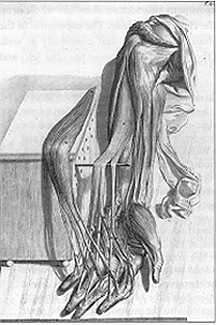
A HISTORY OF MUSCLES
Introduction
Questions to consider: Look at the medieval illustration of the muscular system compared to the Renaissance illustrations: why did the understanding of the muscular system change so dramatically?
A Collection of Quotations from Original Sources and Images of the Muscular System:
Antiquity
The Middle Ages
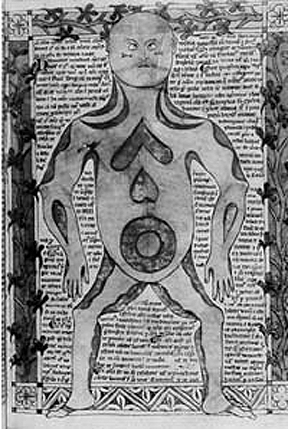
Avicenna, 980-1037
"The power of locomotion is that which contracts and relaxes the muscles whereby the members and joints are moved, extended or flexed. This power reaches the limbs by way of the nerves and there are as many forms of power as there are of movement. Each muscle has its own peculiar purpose and it obeys the decree of the composite sense."
"The muscles are cooler than the "flesh" because of their tendons and ligaments, as well as the nerves."
The Renaissance
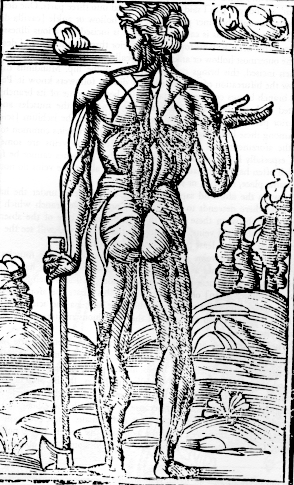

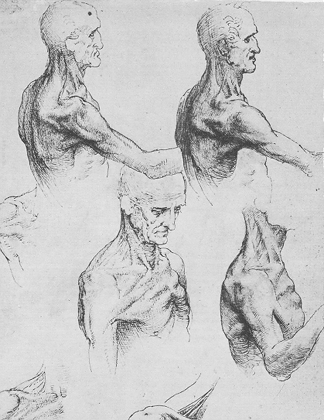




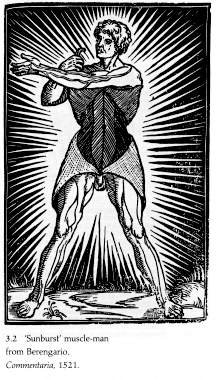

William Harvey, 1653
"Limbs: for the sake of motion wherefore movements of the parts [occur] from junctures of bones and muscles."
"[Muscle] fibers [are] for the sake of motion, sinews, threads. Straight: [1] long longitudinally opening by contraction [2] transverse compressing by contraction. The oblique are unable to detain by tonic motion, because [according to] Fallopius the straight are opened and the transverse are not compressed, by contraction."
"Straight fibers are more conspicuous in the rectum, intestine and stomach, but the stomach, gullet internally and the intestines externally [display] few; in the slender [intestines] (because they detain more) [according to ] Bauhin they strengthen the transverse so that in parts of the rectum the transverse [contract] more swiftly. The transverse [are placed] outwardly in the stomach and gullet, but in the middle in the intestines. The oblique internal are distinguished by dissection [and are used for] retraction, especially coction."
Conclusion